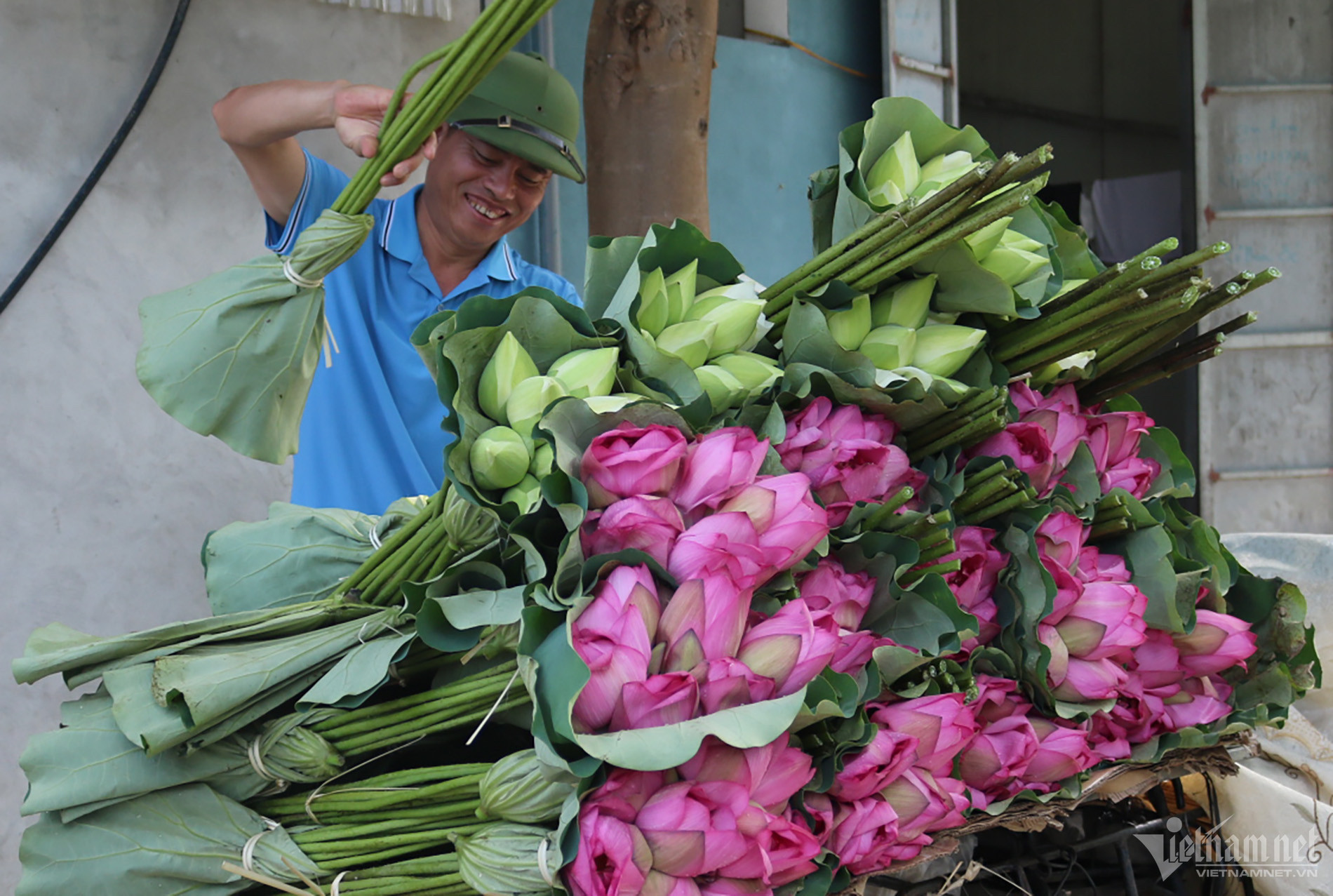
On scorching hot days in early June, along paths in the hamlets of Lieu Tri and Hai Loi in Dai Thinh commune in Me Linh district in Hanoi, tens of thousands of lotus flowers are blooming, giving off a sweet fragrance. It is now the busiest season of local farmers: they work in the open air on the lotus ponds, picking up lotus flowers for sale and for aromatizing tea, the specialty of Hanoi.
Khanh is known as a farmer owning the largest lotus pond in the area. His 60 hectare pond gives about 1 million lotus flowers each season.
Khanh told VietNamNet that he has been growing lotus for six years. There are three major lotus species on the vast lotus pond, including Bach Lien (Nelumbo nucifera Gaertn), sen hong Bach diep ho Tay or West Lake Lotus, and sen Quan am originating from Thailand (Lotos Momo Botan).
At first, he only grew lotus for sale. But one day, when he tasted the tea with the West Lake’s lotus, he decided to create a kind of lotus tea with the Me Linh brand. He began learning about the process of making the special tea.
He read documents and learned about experiences of many people to find a formula to aromatize tea. He visited see famous artisans to learn how to make tea. He now has five years of experience in the field.
Khanh’s lotus tea is created with the same formula, but his tea has a strong flavor and bears the specific taste of Me Linh product which makes it different from others.
“The ‘know-how’ lies in the selection of tea and flowers,” he said. “You must choose the ones with the highest quality."
At 3-4 am, Khanh and other people ride boats on the lotus pond to seek high-quality flowers, and they only remove new blooming lotus flowers, because only such flowers can keep the scent of lotus. They must be very careful when picking flowers and transporting, as the petals can be damaged and cannot be used to add the aroma.
In high season, Khanh collects about 15,000 lotus flowers a day. The figure can be 20,000 sometimes. As the workload is heavy, he has to hire workers and pays VND500 per every flower picked, which means that one worker can earn VND1 million a day, a high income level compared with the pay for office workers.
After picking, the lotus flowers are gathered ashore and carefully selected. The tea used for aromatization is Tan Cuong tea that he has ordered directly from Thai Nguyen.
“The process of covering tea leaves with lotus must be done completely manually, and this work must be finished within the morning to ensure the freshness of the flowers,” Cham, 74, Khanh's mother, said.
In addition to fresh lotus tea, Khanh also provides dry lotus tea. However, it is more difficult to make dry lotus tea.
After five years of making tea with lotus, Khanh now has many loyal clients and never worries about the sale of products.
Me Linh tea products are distributed throughout cities and provinces of the country, including Hanoi, Hung Yen and Vinh Phuc. The products are also carried to the south (HCM City) and exported to China.
“On Tet holiday, Chinese customers usually import lotus tea in large quantities for consumption and gifts,” he said.
In previous years, Khanh provided 2.5-3 tons of aromatic tea to the market.
The number of lotus flowers in the pond is higher this year, so Khanh plans to make 5 tons of tea, or 250,000 lotus tea flowers for sale throughout the year.
Of the 60 hectares of lotus growing area, only 30 hectares are reserved for growing bach diep, the lotus used to make lotus tea, while the remaining 30 hectares are reserved for Bach lien and Quan am, only for sale as flowers.
Merchants can go directly to his pond to pick up lotuses. Most of them are loyal customers who place orders before the new crop begins.
“Flowers can sell in summer, but lotus tea can sell throughout the year,” he said, adding that this year’s crop may bring turnover of VND8 billion. He can also get additional revenue from people who come to take photos of the lotus ponds.
Do Trang